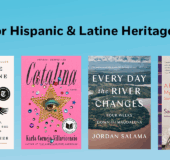List of Maps
Translator's Introduction
By Way of Preface
Introduction: History and the Present Day
I. A History of Civilizations
1. Changing Vocabulary
2. The Study of Civilization Involves All the Social Sciences: Civilizations as geographical areas; civilizations as societies; civilizations as economies; civilizations as ways of thought.
3. The Continuity of Civilizations: Periods within civilizations; underlying structures; history and civilization
II. Civilizations Outside Europe
Part I. Islam and the Muslim World
4. History: Islam as a successor civilization: the Near East in new form; the history of the Near East; Muhammad, the Koran and Islam; Arabia: the problem of a barely urbanized culture.
5. Geography: Islam's lands and seas; a continent as intermediary: trade-routes and towns.
6. The Greatness and Decline of Islam: No Muslim civilization before the eighth or ninth century; the golden age of Islam: eighth to twelfth centuries; science and philosophy; stagnation or decadence: twelfth to eighteenth centuries.
7. The Revival of Islam Today: The end of colonialism and the birth of new nationalist movements; Muslim States in the modern world; Muslim civilization in the twentieth century.
Part II: Africa
8. The Past: Geography; the dark past.
9. Black Africa: Today and Tomorrow: The awakening of Africa; economic and social issues at stake; art and literature.
Part III: The Far East
10. An Introduction to the Far East: What geography shows; barbarism against civilization: the evidence of history; distant origins: the reasons for cultural immobility.
11. The China of the Past: Religion; politics; social and economic affairs.
12. China Yesterday and Today: The time of imposed treaties: China as humiliated victim (1839-1949); China renewed; Chinese civilization in the modern world.
13. India Yesterday and Today: Ancient India (before the British Raj); British India (1757-1947): an ancient economy at grips with the modern West; Will India be spared a Chinese-style revolution?
14. The Maritime Far East: Indo-China; Indonesia; The Philippines; Korea.
15. Japan: Japan before Chinese influence; Japan learns from Chinese civilization; modern Japan.
III. European Civilizations
Part I: Europe
16. Geography and Freedom: Europe takes shape: fifth to thirteenth centuries; liberty and rights: eleventh to eighteenth centuries.
17. Christianity, Humanism, and Scientific Thought: Christianity; humanism and humanists; scientific thought before the nineteenth century.
18. The Industrialization of Europe: The origins of the first Industrial Revolution; the spread of industrialism in Europe (and beyond); socialism and industrialism.
19. Unity in Europe: Outstanding art and culture; economic interdependence; political delay.
Part II: America
20. Latin America, the Other New World: Geography; nature and society: literature bears witness; racial problems: quasi-fraternity; the economy: civilizations on trial.
21. America par excellence: The United States: A reassuring past: opportunities and setbacks; colonization and independence; conquering the West; industrialization and the growth of towns.
22. Failures and Difficulties: From Yesterday to the Present: An old nightmare: Black America, an ineradicable colony; capitalism: from the trusts to State intervention and oligopoly; the United States in the world.
23. An English-speaking Universe: In Canada: France and Britain; Southern Africa: Dutch, British, and Blacks; Australia and New Zealand, or Britain at last unchallenged.
Part III: The Other Europe: Muscovy, Russia, the USSR and the CIS
24. From the Beginning to the October Revolution of 1917: Kiev; the Russian Orthodox Church; Greater Russia.
25. The USSR After 1917: From Marx to Lenin; Marxism and Soviety civilization; the Congress of October 1961.
Index








